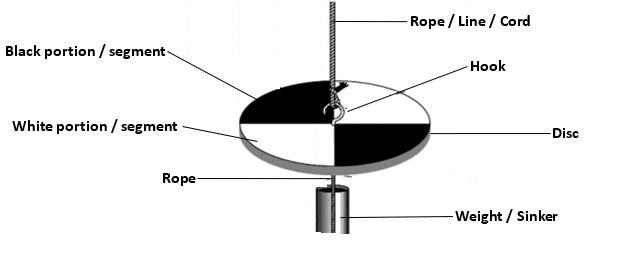Question 1
- (a) State the water quality parameter that is measured using each of specimen A and B.
Specimen A;
Specimen B.
(b) Draw and label specimen A.
(c) Describe how specimen B is used in a fish culture.
(d) State three effects on fish in a fish pond if the reading on specimen B is less than 3.0 mg/l.
Observation
Most of the candidates mentioned Turbidity, transparency, and clarity for specimen A and went on to mention Dissolved Oxygen for Specimen B. Many candidates could not describe the use of Specimen B (Dissolved Oxygen) in sequence as required in Question 1.
The expected answers were:
- Water Quality Parameters measured by Specimens A and B
Specimen A ( Secchi Disc) = Turbidity/transparency/ water clarity
Specimen B (DO Meter) = Dissolved oxygen (DO)
(b) Labelled diagram of a Secchi Disc

(c) How Specimen B (Dissolved Oxygen meter) is used in a fish culture
- Gradually lower the probe into the pond water
- Move the probe in the water to release any air bubbles
- Continue to move the probe
- Wait for the DO meter readings to stabilize and note the reading/value
- Repeat the procedure to get a second reading /value
- Find the average of the two readings/values
- Record the average as the DO content of the pond
(d) Effects of specimen B (Dissolved Oxygen meter) reading below 3.0mg/l on fish
- Fish piping for oxygen at the surface of the pond
- Reduced feed intake by the fish / loss of appetite
- Reduced activities / fish become sluggish / weak
- Mortality/ death
- Fish hanging vertically at water surface
- It can cause increased fish stress / susceptibility to diseases
